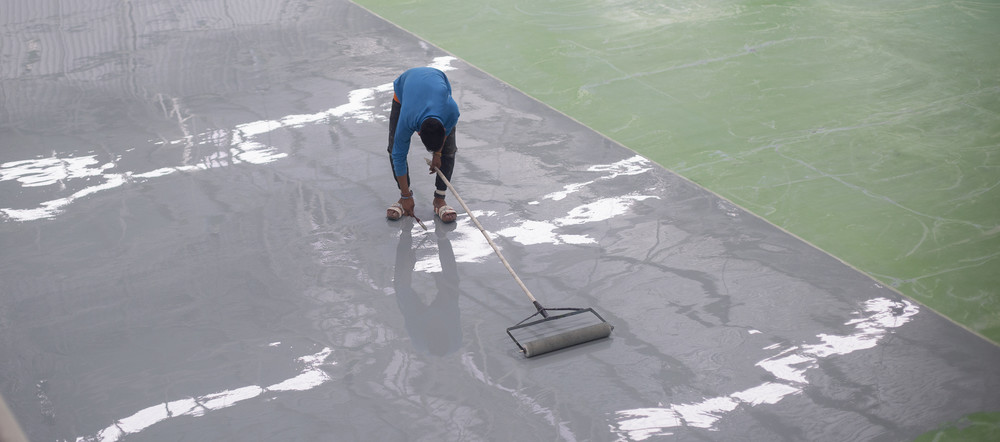Three considerations for choosing the right concrete coating

Coating can increase the performance and longevity of concrete floors by providing chemical resistance, protecting them from deterioration and adding to the aesthetics of a room. In order to get the greatest benefit, a number of considerations need to be made when selecting the right flooring solution for a project.
Assessing the environmental conditions
Concrete, while durable, will not be able to withstand exposure to prolonged periods of traffic or chemical attack if left unprotected. Concrete coatings need to be chosen and installed based on the specific requirements of each individual project to ensure the performance and longevity of the floor.
One of the main aspects to consider when selecting a coating is the type of chemicals it will be exposed to. The level and type of chemical resistance offered varies from coating to coating, some protect against simple chemical splashes; while others are better suited to protecting from more frequent and harsher chemical exposure.
Chris Bauer, Head of Flooring at Hychem, said coatings come with varying degrees of chemical resistance based on the type of chemical exposure the floor will be exposed to.
“Coatings such as epoxy can be used to protect concrete against chemicals including oil and petrol in garages, car parks and workshops, as well as the chemicals found in water and wastewater assets; while PMMA provides good chemical protection for roads, airport hangars and similar infrastructure,” Mr Bauer said.
“For environments such as commercial kitchens, polyurethane provides the best protection from a range of chemicals including fats, oils and cleaning chemicals.”
As well as chemical exposure, another important consideration is the amount of impact the floor will sustain. Whether the floor is exposed to heavy loads, the amount of traffic and the type of traffic (i.e wheel or foot), can all influence the selection and the applied thickness of a coating.
“For a more heavy duty floor that will see a lot of traffic, we recommend selecting a coating with high durability and abrasion resistance as these characteristics will provide the best protection. Epoxy and polyurethane coatings have varying levels depending on the formula, whereas PMMA is designed to be trafficable and is suitable for areas with high vehicle traffic,” Mr Bauer said.
Other environmental conditions that need to be considered are exposure to thermal shock, weather conditions, and UV resistance.
Meeting standards
An important factor in selecting the right coating is knowing the standards for your industry. For example the food and beverage industry should adhere to HACCP Australia standards as well as AS 4674-2004 Construction and fit out of food premises, while hospitals and healthcare facilities should follow the standards covered by the Australian Health Facility Guidelines.
“Different industries have varying standards when it comes to flooring. For example, commercial kitchens in Australia have strict food safety requirements to ensure floor finishes are clean, serviceable, slip resistant and free of harmful bacteria. Whereas storage areas require bunded non slip concrete flooring,” Mr Bauer said.
“The Building Code of Australia (BCA) outlines requirements for slip resistant surfaces in different buildings. Depending on the type of space being coated, the coating will need to comply with the specified level of slip resistance.”
Volatile organic compound (VOC) levels are also a key consideration.
“Looking at the VOC levels of a coating is good practice as those with high levels can’t be used in certain areas such as education and health facilities due to potential health risks,” Mr Bauer said.
“You also want to stay away from high odour or high VOC coatings if you’re dealing with limited access or low ventilation areas as these present a health and safety risk to those applying the coating.”
Aesthetics
While functionality and practicality are the top priorities, many building owners want their rooms and entrances to look as inviting as possible.
“Coatings can either be a solid colour or have decorative flakes added for extra dimension, depending on the desired look and feel of a room,” Mr Bauer said.
“Epoxy, MMA and polyurethane can all be manufactured in a variety of colours. Some epoxy and polyurethane products are highly customisable and can be colour matched or new colours can be created, which is great for those wanting colours that aren’t standard.
“Polyurethane also has the advantage of good UV resistance, which keeps the flooring colour stable.
“There are a lot of considerations to be made when choosing which coating is right for a project. Our experienced team at Hychem can help you identify and select the right product to suit the requirements of your project so that your coating lasts.”
